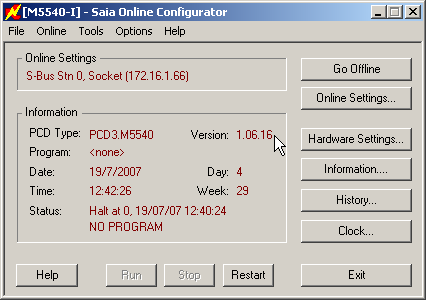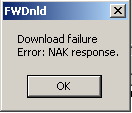-
PCD3.Mxx60
-
PCD3 Power-CPU series
-

Documentation
System Catalogue : PCD3
| Extract | 26-215_A0120 | System Catalogue : PCD3 |
PCD3.M5360 - RS422, Ethernet, up to 1023 I/O
| Datasheet | PP31-667 | PCD3.M5360 - RS422, Ethernet, up to 1023 I/O |
PCD3.M5560 - CPU power module with up to 1023 I/O
| Datasheet | PP31-663 | PCD3.M5560 - CPU power module with up to 1023 I/O |
PCD3 processor unit with Ethernet TCP/IP, web and FTP server, file system,
CPU with 2 MByte user program, 1 MByte SRam extension memory,
128 MByte user Flash memory with file system, clock (RTC),
data protection 1-3 years, USB port for PG5, up to 1024 I/O,
2 interrupts, RS-232, 2× RS-485 for Profi-S-Net/MPI/S-Bus
| ENG01 |

|
0.36 MB | Download | ||
| FRA01 |

|
0.37 MB | Download | ||
| GER01 |

|
0.37 MB | Download | ||
| ITA01 |

|
0.38 MB | Download |
PCD3.M6560 - Profibus DP Master, up to 1023 I/O
| Datasheet | PP31-668 | PCD3.M6560 - Profibus DP Master, up to 1023 I/O |
PCD3 Hardware
| Manual | 26-789 | PCD3 Hardware |
File System and FTP Server
IO-Modules
| Manual | 27-600 | IO-Modules |
Systemcable and adapter
| Manual | 26-792 | Systemcable and adapter |
PCD3.F1xx & PCD3.F2xx - Communication modules
| Manual | 26-857 | PCD3.F1xx & PCD3.F2xx - Communication modules |
TCP/IP - Ethernet for the Saia PCD® Serie
| Manual | 26-776 | TCP/IP - Ethernet for the Saia PCD® Serie |
TCP/IP-Enhancements
| Manual | 26-867 | TCP/IP-Enhancements |
Leaflet: PCD3.Mxx60
App notes incl. examples PPP, DHCP, DNS and SNTP
| Info | Application Notes | App notes incl. examples PPP, DHCP, DNS and SNTP |
Firmware used in production
The actual COSinus FW 1.26.xx or higher is available from the COSinus firmware page.
Software / Tools
| The internal power consumption of systems with PCD3 components can be calculated with PG5 Device Configurator | ||
| EPLAN product macros, DWG and DXF files can be found here (the dimensions of the PCD3.Mxx60 are identical to the PCD3.Mxx40) | ||
| For printing on the Labeling-Strips for PCD3-Modules please use the Device Configurator from PG5 2.0. |
Good to know
| To use PCD3.M3160, PCD3.M3360 or PCD3.M5360, PG5 2.2.130 or newer is required. |
| To use PCD3.M5560, PG5 2.0.200 (SP2) or newer is required. |
| No more possible to set the PCD3.Mxx60 in to the firmware download mode with the help of the run/stop switch (since booter version 1.24.11) See FAQ 101948 |
| The differences between firmware version 1.16.42 and 1.16.69 are listed in FAQ 101624. |
| For configuring a PCD3.Mxx60 PG5 2.0.200 (SP2) is required. |
| Application programs are stored in the onboard flash. For this reason, the new CPU differs in its behaviour regarding program download, backup and restore requirements from existing PCD3 CPUs. |
| The CPU can remain in run during the download process, but always restarts before deploying the new program (download changed blocks in run is not yet possible). |
PCD3 / Mxxx
- How to know whether the circuit board of the PCD is fitted with a Swissbit micro-SD memory card? (FAQ #102070)
- How to copy csv-Files and Webeditorproject files which are stored on the Intflash of a PCD, if you are replacing an internal micro-SD memory card which is used on the circuit board of the PCD? (FAQ #102069)
- What is stored on the micro-SD memory card which is used on the circuit board of the PCD? (FAQ #102068)
- How can the micro SD memory card on the circuit board of a PCD controller be replaced? (FAQ #102067)
- Why are the inputs and outputs of a PCD3 systems not switched on and off correctly, or switched on and off randomly, or the I/O status not detected correctly in the PLC? (FAQ #102063)
- It's possible to connect SBC PCD's directly to the internet? (FAQ #102060)
- What are the differences between the COSinus firmwares FW 1.28.11 and FW 1.28.51? (FAQ #102058)
- On a PCD2.M4560 or PCD3.M5560, why the measured PT100 temperature values are not correct if the PT100 sensors are connected to PCD2.W220Z18 or PCD3.W220Z18 modules? (FAQ #102052)
- Why on a PCD3.M5/6xxx or a PCD2.M45xx the battery LED is switched on and the battery error message is activated in the application program after a new battery was inserted? (FAQ #102039)
- What are the differences between the COSinus firmwares FW 1.28.11 and FW 1.28.51? (FAQ #102010)
- Remark about the firmware update on PCD3.M6860 or PCD3.M6880 CPU’s (FAQ #101988)
- What are the differences between the COSinus firmwares FW 1.24.67 and FW 1.26.31? (FAQ #101987)
- It’s possible to suppress the PCD Alarms on BACnet? (FAQ #101975)
- How to configure the analogue inputs of a PCD3.M90 to be able to connect an NTC10k temperature sensor? (FAQ #101974)
- Why it’s no more possible to set the PCD3.Mxx6x in the firmware download mode with the help of the run/stop switch? (FAQ #101948)
- How does the battery / power-up check work on the PCD? (FAQ #101929)
- What are the differences between the COSinus firmwares FW 1.22.48 and FW 1.24.69? (FAQ #101921)
- Why the status overflow flag of the onboard analogue inputs of the PCD1.M0, PCD1.M2, PCD3.M2x30V6 (PCD3 Compact) and PCD3.M2x30A4Tx (PCD3 WAC) does show an over-flow in the middle of the measurement? (FAQ #101864)
- It's possible to connect a Ethernet Port of a PCD directly to Power over Ethernet (PoE)? (FAQ #101847)
- Why is there an offset to the current PCD time in the Trending timestamp of a Web project if the FW 1.20.nn is used? (FAQ #101834)
- What does the history message 'MEMORY LOST n' mean? (FAQ #101830)
- On PCD2.M5 and PCD3 CPU's without Ethernet port and equipped with the FW 1.20.25, it's not possible to communicate over the port 0 and 1. (FAQ #101823)
- What are the differences between firmware 1.16.69 and COSinus FW 1.22.61? (FAQ #101820)
- Why the MPI adapter doesn’t work on the MPI port of the PCD3.M5547, PCD3.M5567, PCD3.M5540, PCD3.M5440 or PCD3.5560? (FAQ #101814)
- On a NT PCD the S-Bus slave gateway port doesn't communicate after programm restart of the gateway PCD! (FAQ #101802)
- Which Texts are writeable/editable during Runtime on a PCD? (FAQ #101801)
- Lifetime expectancy of the Renata Lithium battery on recent PCD compared to previous PCD generations (FAQ #101780)
- How the RS485 bus is terminated if on a PCD3.M5340 the bustermination of the port 3 is activated? (FAQ #101753)
- What is the signification of the history entry "Resisters Fail"? (FAQ #101722)
- Why is the modem "MDLS144 onbit" no longer working on a new PCD? (FAQ #101718)
- Why does the PCD no longer run due to "BNt FAIL AI00006"? (FAQ #101712)
- Why does the user program no longer work correctly after a restore from flash? (FAQ #101680)
- What is the article number of the PCD3.M5/6 onboard battery module? (FAQ #101675)
- Why is it no longer possible to switch on/off the digital outputs of the PCD3.Compact after installing PG5 SP2 (PG5 2.0.200)? (FAQ #101663)
- Why is it no longer possible to switch on/off the relay outputs of the PCD3.WAC after installing PG5 SP2 (PG5 2.0.200)? (FAQ #101659)
- Why I get the error message "NAK response" during a program download (with PG5 SP2)? (FAQ #101656)
- Why has the PCD lost the program while updating the firmware to 1.16.xx? (FAQ #101625)
- What are the differences between firmware 1.14.23 and 1.16.69? (FAQ #101624)
- What for is the "Extension memory backup size" in the Device Configurator used? (FAQ #101623)
- How does the "Backup user program to file system" on PCD3 and PCD2.M5 work? (FAQ #101622)
- Why does the SMS transmission on a PCD3 WAC sometimes fail? (FAQ #101564)
- Why is the "GPRS Status" of the WAA library not always updated? (FAQ #101545)
- Important remark when updating the PCD firmware from 1.10.xx or 1.14.xx to 1.16.xx/1.20.xx (FAQ #101535)
- Why is the USB communication to my PCD lost after a program download? (FAQ #101518)
- What do parameters 'speed' and 'priority' mean which get displayed on the status page of the PCD? (FAQ #101513)
- How to extend the amount of available Flags on a PCD? (FAQ #101447)
- How long does the SuperCap of the PCD3.M3xxx protect the media and RTC from being lost? (FAQ #101426)
- What are the reasons for a "Bus Error" on a PCD2.M5 or a PCD3? (FAQ #101418)
- Firmware dependencies for the "DB Access Library" (FAQ #101372)
- How to configure a Profi-S-I/O network with a PCD3.M2 as master? (FAQ #101367)
- Why are the inputs 8100 and 8101 continously "high" in my fupla file? (FAQ #101363)
- Why is it not possible to choose minimal and maximal value in the device configurator for the PCD3 compact? (FAQ #101311)
- Why can't I add an extension module to my PCD3 compact? (FAQ #101303)
- Why does the PCD go into halt when using temporary data (TEQU)? (FAQ #101293)
- Meaning of the error codes for DB backup to flash (FAQ #101284)
- Why are the DBs not correctly restored after a "restore program from flash"? (FAQ #101279)
- Meaning of the LEDs on Profibus DP Master modules and CPUs (FAQ #101271)
- Is Modbus supported by Saia PCD®s? (FAQ #101270)
- What happens if I use the I/O address 255 as Input or Output of a PCD3? (FAQ #101252)
- Is it possible to use an encoder on PCD3.M2x30V6? (FAQ #101237)
- Can I detect the CTS signal on port 3 of a PCD3.M5340 (in RS422 mode)? (FAQ #101170)
- How to download the configuration of the PCD3.M2xxx (FAQ #101167)
- Is parity mode working on all ports of PCD3 and PCD2.M5 CPU? (FAQ #101103)
- Why it's not possible to use the whole memory of a file system on flash? (FAQ #101082)
- Where can I plug flash memory modules on a PCD3 CPU? (FAQ #101027)
- Why is the port 2 of the PCD3.Mxxx no longer working? (FAQ #101026)
- The PCD3.M6440 is not available in the Hardware Settings (FAQ #100987)
- How to reset a PCD3 system? (FAQ #100954)
- Why does the MAC address shown on the sticker not have 12 digits? (FAQ #100946)
- Why can't I change the Profi-S-Bus address on a PCD3.M6540 Port 2? (FAQ #100941)
- Why is the 1 MB internal flash memory with file system not available on PCD3.M2130V6? (FAQ #100874)
- Is it possible to use the cable PCD2.K106 between PCD3.Mxxxx and PCD2.Cxxx ? (FAQ #100804)
- Why are broadcast telegramms not working anymore on the PCD3 or PCD2.M480 (FAQ #100798)
- What is the article number of the orange 8-pol cage clamp connector (power supply connector) of the PCD3.M3/5 CPU? (FAQ #100789)
- Why is the Port 3 on the PCD3.M5340 not running correctly in RS 485 mode? (FAQ #100765)
- Why can't I connect a PCD3.M5xx0 over the serial PGU port? (FAQ #100737)
- Tool to test if IP ports are blocked by Router of Firewalls (FAQ #100729)
- PCD3.Mxxxx Real Time Clock (RTC) corruption (FAQ #100712)
- Backup and restore Text/DB doesn't work with the SYSWR K 3x00 calls on the onboard Flash of the PCD3? (FAQ #100702)
- Conflict between communication module (PCD3.F1xx) and memory module (PCD3.Rxxx) (FAQ #100636)
- Is it possible to connect non-SBC devices on a Profi S-I/O network? (FAQ #100596)
- Why is the error LED on after having sent an SMS message? (FAQ #100582)
- Userprogram update with PCD7.R500 (FAQ #100515)
- Why does the "Error 335:...Invalid register number" appear on build? (FAQ #100491)
- Where does a "Backup User Program to flash" write the backup? (FAQ #100452)
- Multi protocol functions for Profibus DP, Profi-S-IO and Profi-S-bus using port 10 or port 2 on a PCD3.Mxxxx. (FAQ #100409)
- New systems do not support the baudrates below 1200Baud (FAQ #100394)
- HMI Editor and PCD3.M_ or PCD2.M480: Wrong characters are display instead of value with Format #####! (FAQ #100360)
- Why can't I use registers above 8191 with the Modbus FBox library from Engiby? (FAQ #100354)
- Which subnet masks are allowed for a TCP/IP configuration of a PCD? (FAQ #100318)
- MPI communication on the Profi-S-Net port of a PCD2.M480, PCD2.M5xxx or PCD3.Mxxxx (FAQ #100284)
- Download of the wrong FW to a PCD3 possible (FAQ #100259)
PCD3 / _Firmware Classic
- It's possible to connect SBC PCD's directly to the internet? (FAQ #102060)
- What are the differences between the COSinus firmwares FW 1.28.11 and FW 1.28.51? (FAQ #102058)
- On a PCD3.M6860 it’s possible to use BACnet on the Ethernet port ETH1 and/or on ETH2? (FAQ #102031)
- Why the RS-485 S-Bus communication between the PCD master and the slave does fail sometime, if FW 1.28.20…1.28.33 is used? (FAQ #102026)
- PCD Firmware 1.28.16 or 1.24.69 fix the Ethernet frame padding information leakage (FAQ #102011)
- What are the differences between the COSinus firmwares FW 1.28.11 and FW 1.28.51? (FAQ #102010)
- Lon Bindings lost after power off / on with FW 1.26.15 (FAQ #101999)
- What are the differences between the COSinus firmwares FW 1.24.67 and FW 1.26.31? (FAQ #101987)
- What is the meaning of the PCD history entry ‘FWDnld UnknownFW’? (FAQ #101959)
- MUKE error 100xxxxxH (FAQ #101933)
- How to find more information based on the error message "SF not loaded"? (FAQ #101568)
- What does CSF stand for? (FAQ #101566)
- What are the differences between firmware 1.10.51 and 1.14.23? (FAQ #101470)
- Why can't I send more than 512 bytes using the STXT instruction? (FAQ #101468)
- Can I have more than 16 COBs? (FAQ #101467)
- Why is the error bit 7 or 8 set when I try to execute a "Backup DB to flash"? (FAQ #101466)
- What are the differences between firmware 1.10.16 and 1.10.51? (FAQ #101422)
- How to define a comma as separator in interpreted texts? (FAQ #101392)
- Potential data loss on SD cards bigger than 256 MBytes (FAQ #101377)
- Is the "full duplex" mode supported by the Ethernet ports of a PCD? (FAQ #101365)
- Overview of the current production firmware versions (FAQ #101304)
- What does "Saia PCD® COSinus" stand for? (FAQ #101297)
- How to implement a software watchdog (FAQ #101285)
- Why does the S-I/O communication no longer work on a PCD3 or a PCD2.M5? (FAQ #101244)
- What is the "WebServer2" on Saia PCD® COSinus systems? (FAQ #101191)
- Can I calulate with IEEE floating point values on a PCD system? (FAQ #101188)
- Can I read a value from a PCD text and copy it into a register? (FAQ #101187)
- Is it possible to search an expression within a PCD text? (FAQ #101186)
- The XOB 8 is no longer called on the systems Saia PCD® COSinus. (FAQ #101137)
- Why does the communication on the PCD3.F281 not work? (FAQ #101090)
- Why does a "KRNL ERROR" or a "SWTO Error" occur? (FAQ #101069)
- What criterias are to be fulfilled for sending e-Mails from the PCD? (FAQ #101054)
- Why is the message: "Failed to get data on alarm.exe" displayed on the alarming page? (FAQ #100963)
- Is it possible reading the PCD "IP address" from the user program? (FAQ #100952)
- How does the system watchdog work? (FAQ #100908)
- How to dump the memory of a PCD (with Saia PCD® COSinus firmware)? (FAQ #100833)
- Why are broadcast telegramms not working anymore on the PCD3 or PCD2.M480 (FAQ #100798)
- Why is the Port 3 on the PCD3.M5340 not running correctly in RS 485 mode? (FAQ #100765)
- Download of PCD3 firmware fails on END command (NAK response) (FAQ #100742)
- New firmware version names for Saia PCD® COSinus systems (a.bb.cc) (FAQ #100741)
- Why can't I connect a PCD3.M5xx0 over the serial PGU port? (FAQ #100737)
- PCD3.Mxxxx Real Time Clock (RTC) corruption (FAQ #100712)
- Can I use the character mode with XON/XOFF protocol on NT-PCD's? (FAQ #100700)
- Download of PCD3 firmware fails on END command (no response) (FAQ #100681)
- Download of PCD3 firmware fails with "NAK response" (FAQ #100679)
- Different handling of the TBSY flag (in MC mode) between PCD3 / PCD2.M5 and older systems (FAQ #100655)
- Conflict between communication module (PCD3.F1xx) and memory module (PCD3.Rxxx) (FAQ #100636)
- allowed Firmware for PCD3.M5540 hardware version D (FAQ #100590)
- Intelligent modules aren't correctly detected on HW version older than "D" (FAQ #100549)
- Why is the message: "cannot create page content yet" appears from time to time (FAQ #100527)
- PCD8.K120 doesn't work after FW download to PCD3 (FAQ #100524)
- Why does "Sasi Slave" on Port 1 / 0 (RS232) of the PCD3 generate an error? (FAQ #100420)
- PCD3 problem with "Real TIME CLOCK" Firmware V010 (FAQ #100387)
- lose Hardware settings after Firmware update (FAQ #100366)
- FW depending differences in the handling of the diagnosic flags (FAQ #100321)
- Error LED of PCD is lit! How to find the problem? (FAQ #100269)
- Download of the wrong FW to a PCD3 possible (FAQ #100259)
- What EPROM burner is recommended to create firmware chips for PCD's? (FAQ #100256)
- Firmware version naming of non-Saia PCD® COSinus systems (FAQ #100176)
- Not all History entries can be found in the Online Help of PG5 (FAQ #100173)
- Why is the instruction DSP not supported on Saia PCD® COSinus systems? (FAQ #100034)


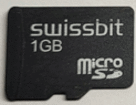
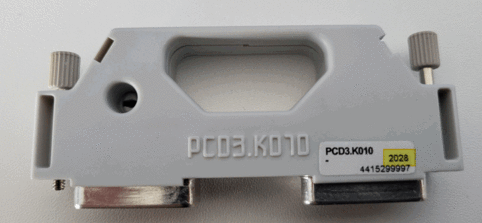
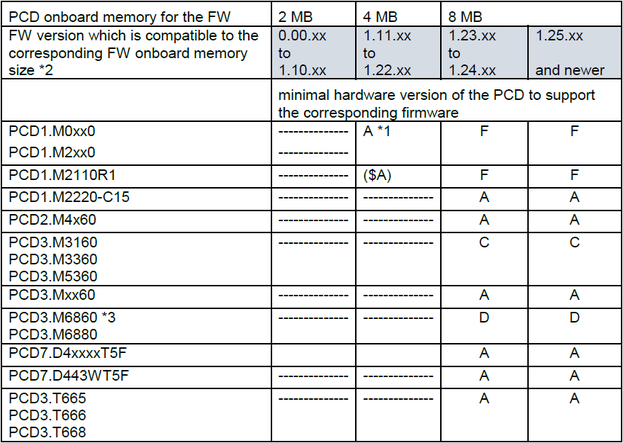
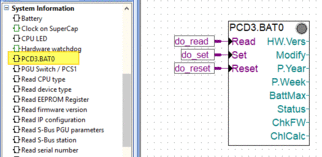
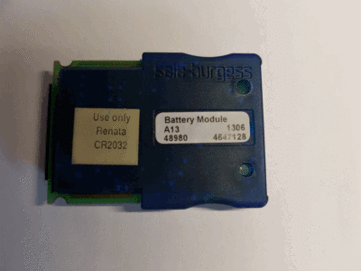
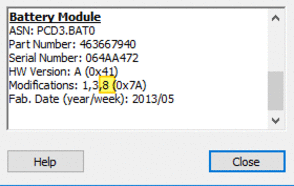

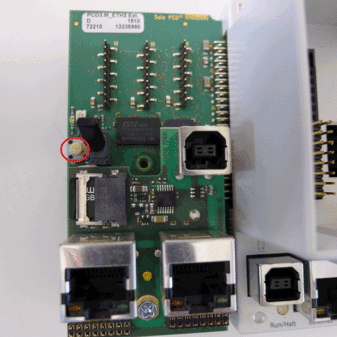
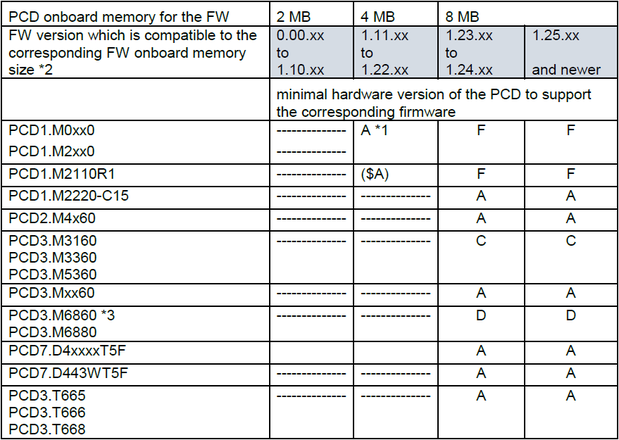
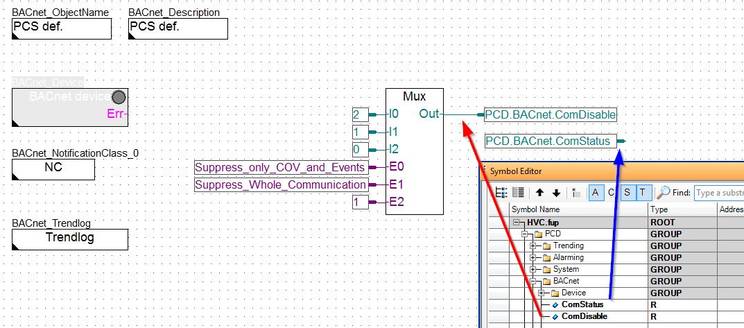
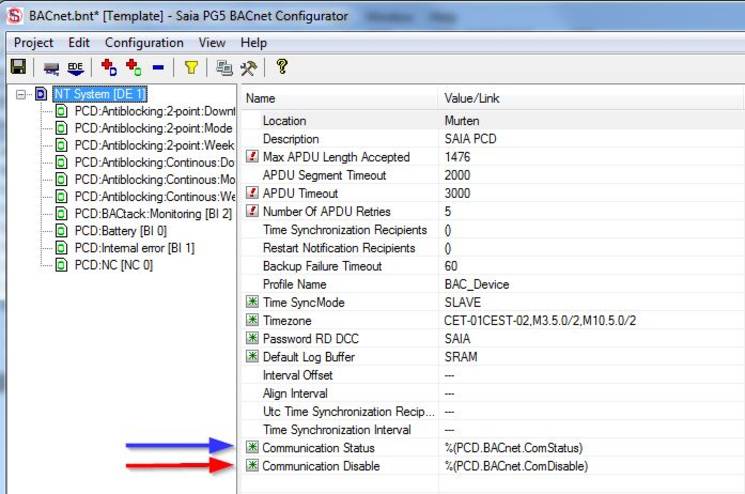
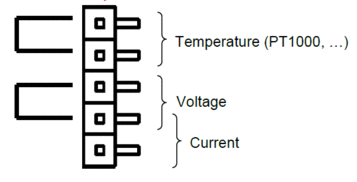
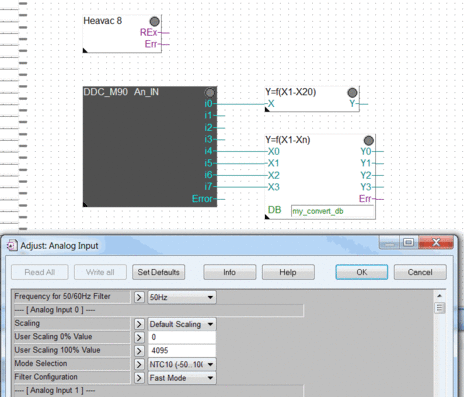

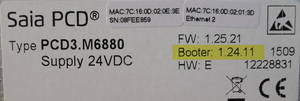
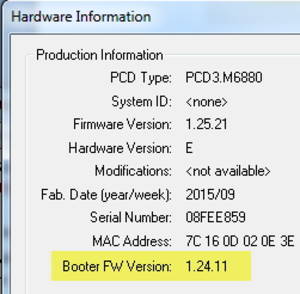
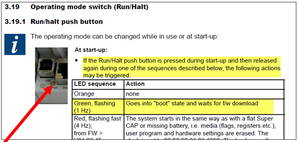
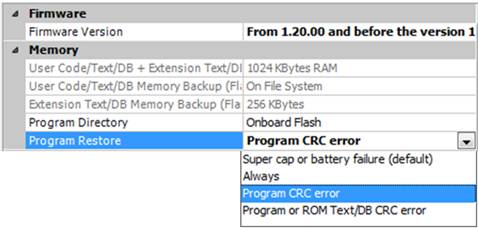
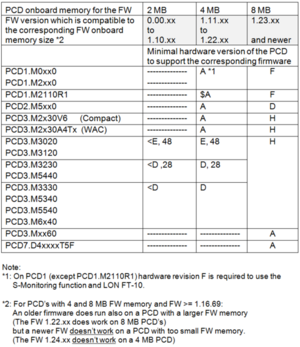
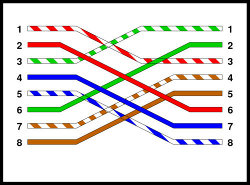


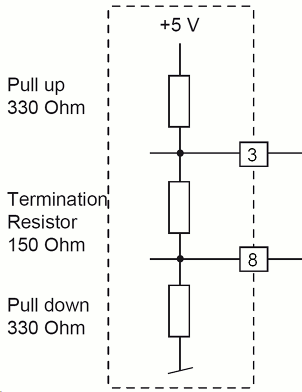
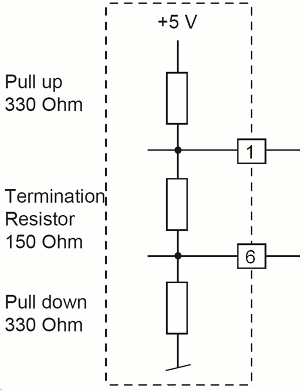
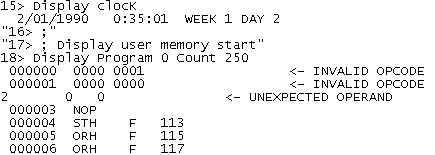
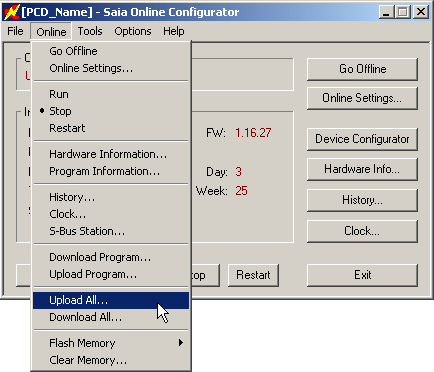
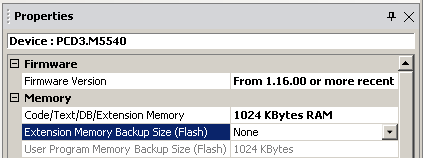


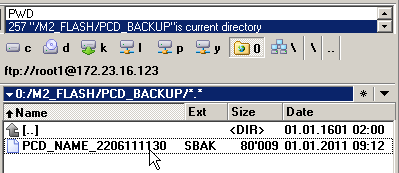
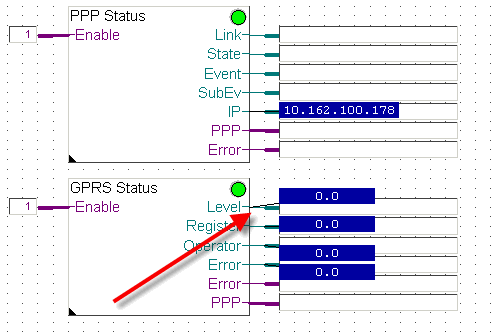
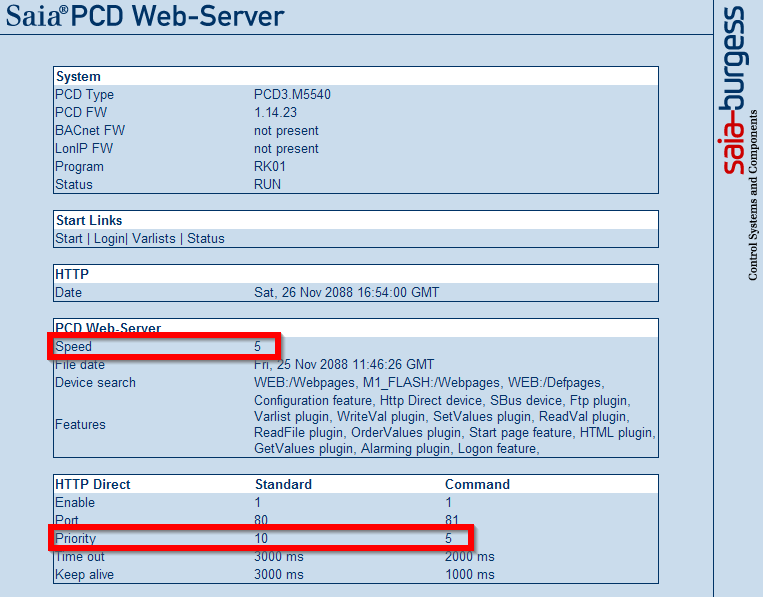
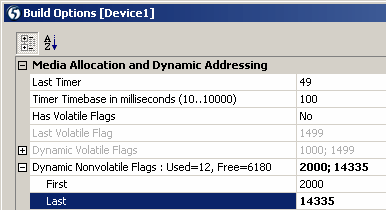
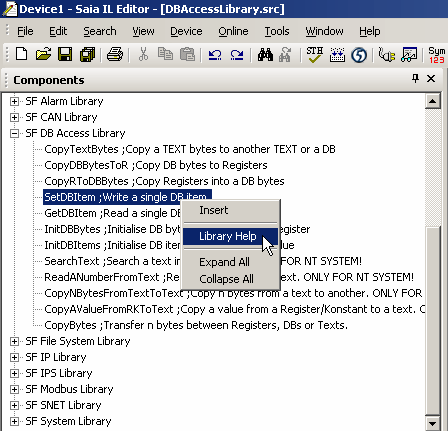
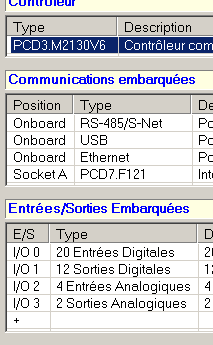
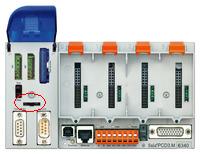


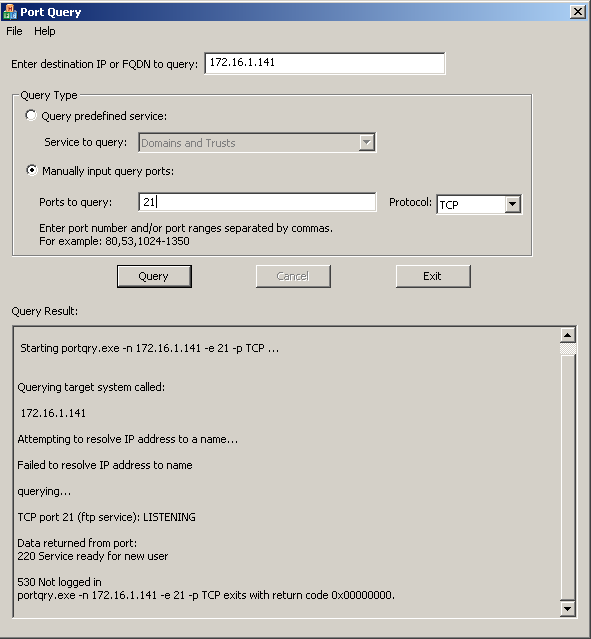
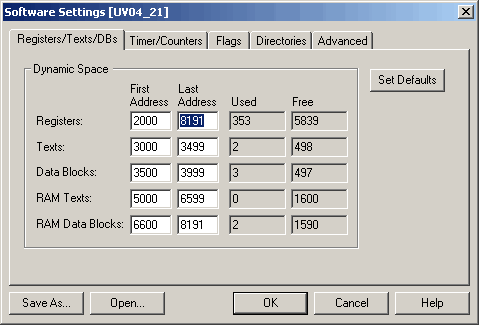
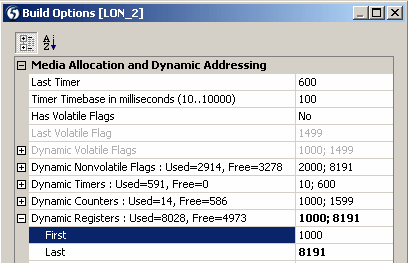
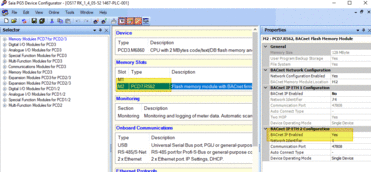
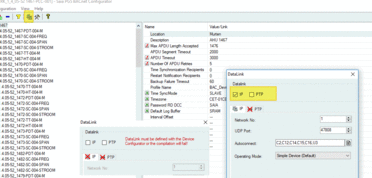
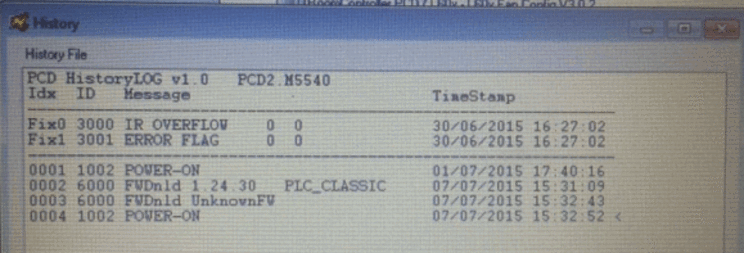
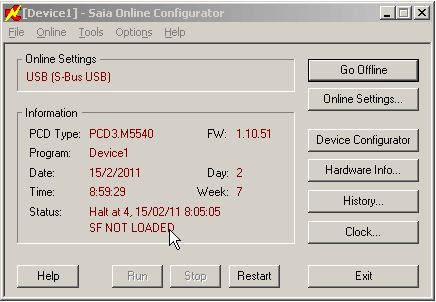
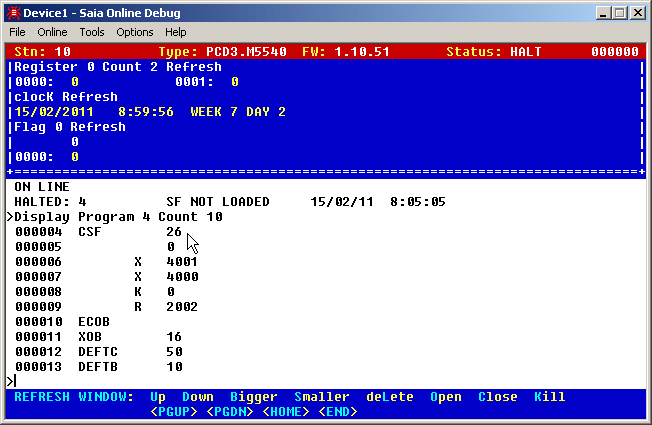
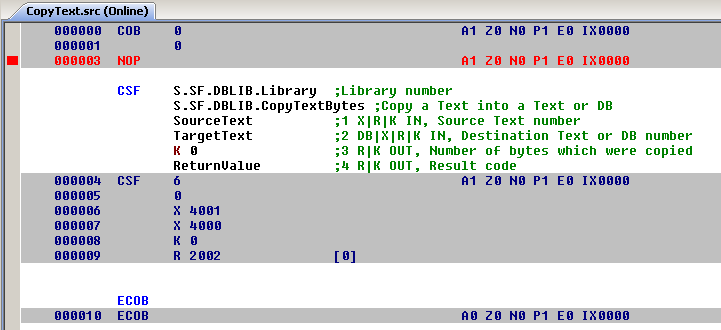
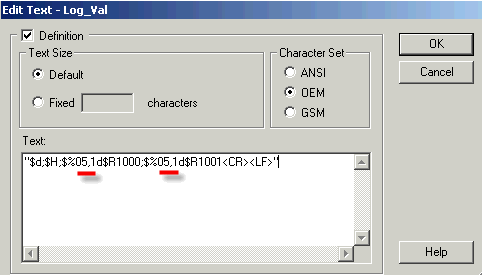
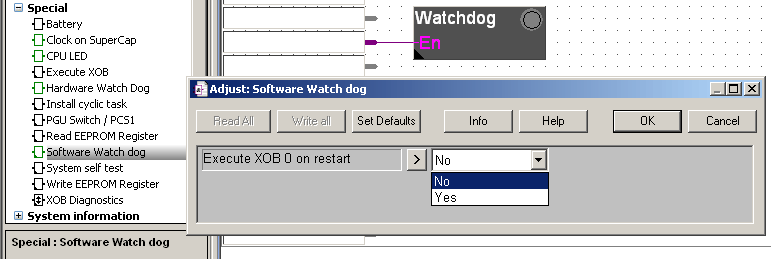
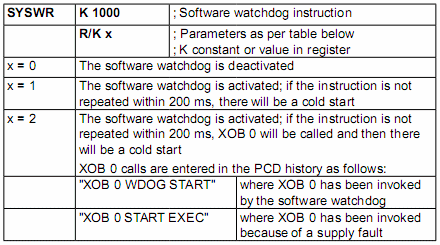

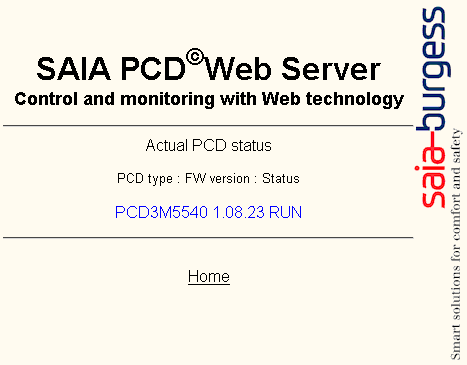
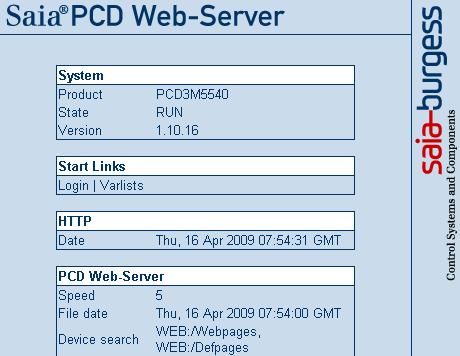
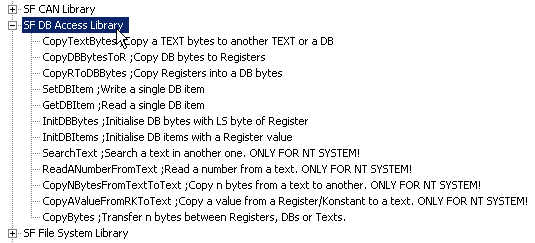
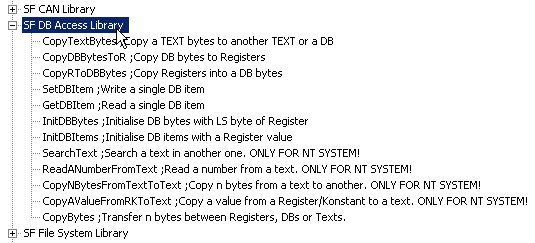
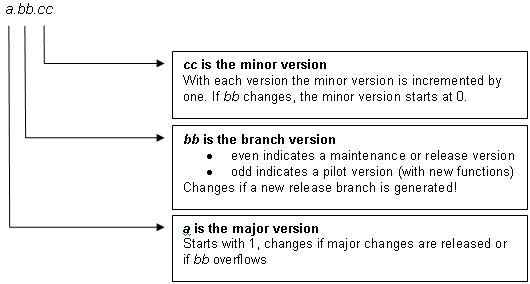
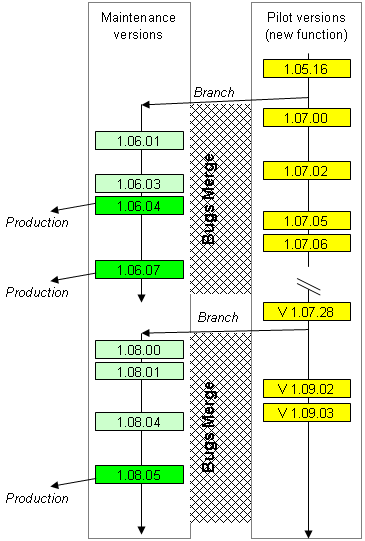
 Released beta- or maintenance versions (equivalent to the current “Bxx” or “#xx” versions).
Released beta- or maintenance versions (equivalent to the current “Bxx” or “#xx” versions).  Released Production versions (equivalent to the current “0xx” versions): These versions are introduced in the production.
Released Production versions (equivalent to the current “0xx” versions): These versions are introduced in the production.  New function versions (equivalent to the current “$xx” versions).
New function versions (equivalent to the current “$xx” versions).